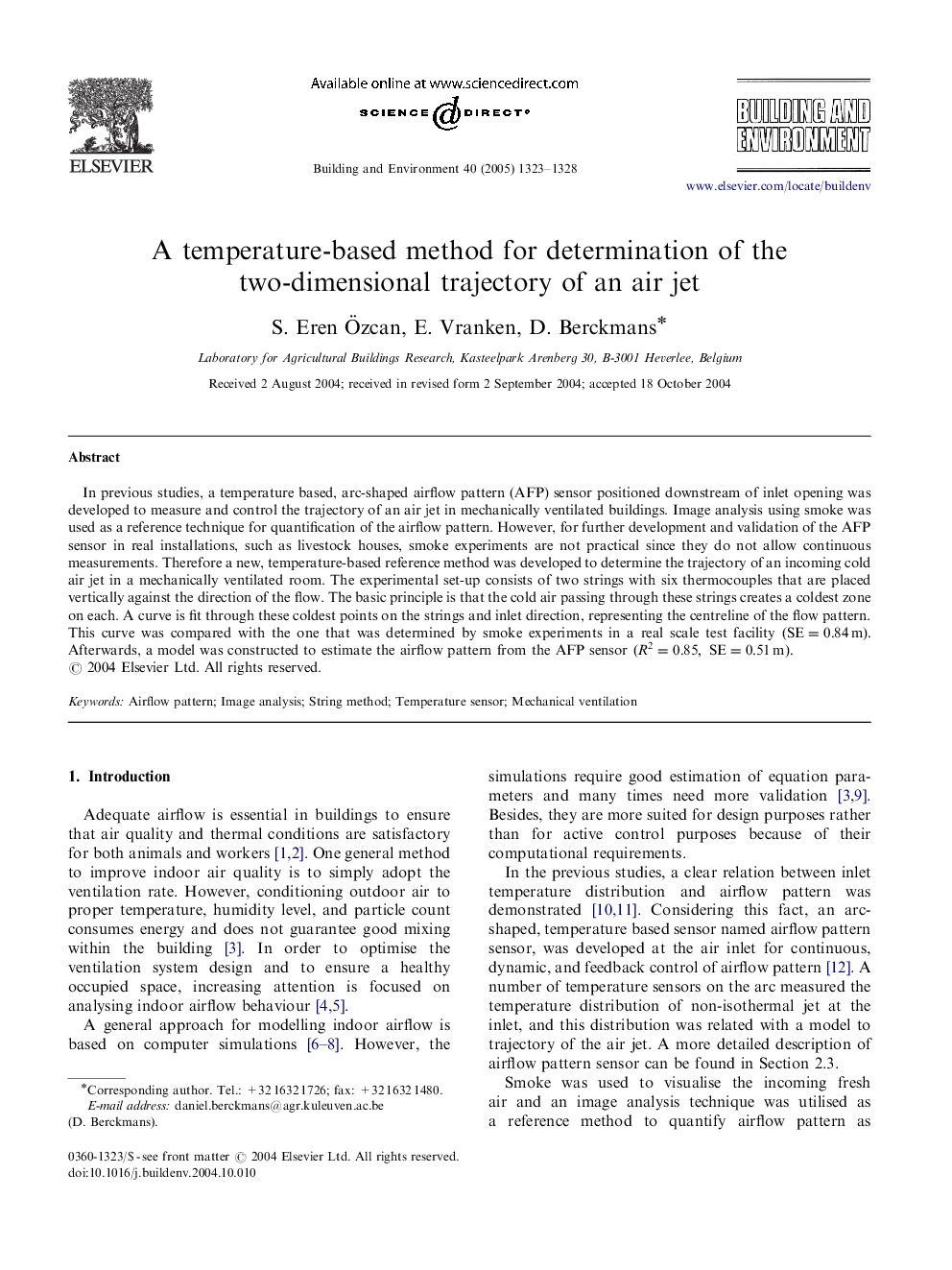| Article ID | Journal | Published Year | Pages | File Type |
|---|---|---|---|---|
| 10282833 | Building and Environment | 2005 | 6 Pages |
Abstract
In previous studies, a temperature based, arc-shaped airflow pattern (AFP) sensor positioned downstream of inlet opening was developed to measure and control the trajectory of an air jet in mechanically ventilated buildings. Image analysis using smoke was used as a reference technique for quantification of the airflow pattern. However, for further development and validation of the AFP sensor in real installations, such as livestock houses, smoke experiments are not practical since they do not allow continuous measurements. Therefore a new, temperature-based reference method was developed to determine the trajectory of an incoming cold air jet in a mechanically ventilated room. The experimental set-up consists of two strings with six thermocouples that are placed vertically against the direction of the flow. The basic principle is that the cold air passing through these strings creates a coldest zone on each. A curve is fit through these coldest points on the strings and inlet direction, representing the centreline of the flow pattern. This curve was compared with the one that was determined by smoke experiments in a real scale test facility (SE=0.84m). Afterwards, a model was constructed to estimate the airflow pattern from the AFP sensor (R2=0.85,SE=0.51m).
Related Topics
Physical Sciences and Engineering
Energy
Renewable Energy, Sustainability and the Environment
Authors
S. Eren Ãzcan, E. Vranken, D. Berckmans,
